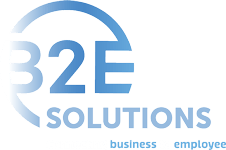As a business owner, it’s a major milestone when you’re ready to start hiring employees (or get yourself on payroll). While it’s an exciting time, it also means you’ve got a lot of preparations to make. Whether you plan to run payroll yourself or use a payroll service provider, you’ll need to complete some government paperwork before moving forward.
To make sure you’re payroll-ready, you’ll need to go through the process of setting up these seven government records:
1. Federal Employer Identification Number (EIN or FEIN)
First, you need to apply for an EIN, also called a federal tax ID number or taxpayer ID, which is like a Social Security number for your business. The IRS requires every business with employees to have a nine-digit EIN, which it uses to track businesses for tax purposes. If you’ve registered your business as a corporation or a partnership, you may already have an EIN, but if you don’t, it’s easy to get one by applying online.
2. State/Local Tax Identification (ID) Number
In addition to your EIN, if your state has an income tax, you need to apply for a state tax ID number, which is also known as a state employer identification number (state EIN) or a state tax registration number. Depending on where you live, your business may also be subject to local income tax. If that’s the case, you’ll also need to apply for a local tax ID number. The registration process for getting a state or local tax ID number varies by state, so check with your state’s department of revenue website for more information.
3. State Unemployment Identification (ID) Number
When you own a business, you’re responsible for paying state unemployment tax on behalf of your employees. In most states, you need to apply for a separate state unemployment tax ID number, but not all of them. In some locations, your regular state tax ID number will do the trick. Check your state website to make sure you’re clear on requirements.
4. Form I-9
Before your employees start, they need to complete the federal Form I-9, which verifies they’re legally authorized to work in the United States. On this form, employees must include their contact information, Social Security number and employment eligibility. They also need to provide documentation to verify their identity. As an employer, you’ve got some work to do too. You need to examine the information your employee provides to confirm authenticity, and record the documentation they’ve provided. You’re also responsible for retaining the form for three years after the date of hire, or for one year after the date employment ends, in case of inspection by authorized government officers.
5. Form W-4
The Form W-4, also known as the Employee’s Withholding Certificate, asks your employees how much federal income tax to withhold from their pay. Considering the changes introduced by the Tax Cuts and Jobs Act (TCJA), your employees may need additional help when filling out the W-4. Point them to the IRS withholding calculator to ensure their withholding amounts are accurate. If you’re doing your own payroll, withholding can be a lot to manage, so you may want to consider using a payroll service provider to automate the process and ensure accuracy.
6. State Withholding Allowance Certificate (State Form W-4)
As a result of the TCJA, several states now require employees to complete a state-specific W-4 in addition to the federal W-4. Of course, this only applies if you have a state income tax. To find out which withholding forms your employees need to submit, refer to our handy chart. Keep in mind that requirements change often though, so you should also check your state’s tax website to confirm current requirements.
7. Department of Labor (DOL) Records
The DOL requires employers to track employee payroll information so they can verify compliance with federal and state wage hour rules if necessary. Keep your records up-to-date by tracking employees’ weekly hours, wages and any earned overtime. In the event you’re audited by the DOL, these records can help prove your pay practices meet government standards. Since timekeeping can be tedious, you may want to consider using a tool like Orbit Solutions to automate and streamline the process.
Preparing for payroll is key.
When you’re just getting started with payroll, the to-do list can seem overwhelming, but it doesn’t have to be. Once you get through the initial setup (and yes, some extra paperwork), you can make payroll manageable and stress-free if you have the right tools in place. To find out how we can help, send us a note today!










